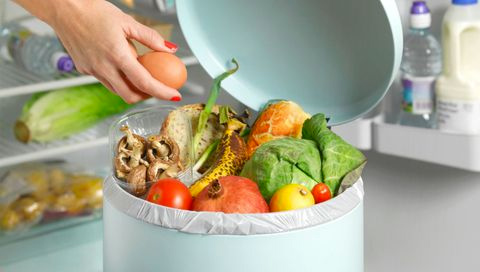

New studies on red meat consumption and tips on how to not waste it, store it, eat it and, we will add, process it better.
It's a delicate topic, and the subject of many publications and debates: the link between eating too much red meat and developing even serious pathologies. New information is now available as well as a series of handy tips that we as quality manufacturers want to share.
Main source FOODMEAT March/April 2019 issue (Pianeta carne&Economia agricola) - Analysis MediaticaWeb - Bologna
New food trends and information from the media direct consumers towards different diets, changing traditional purchasing behaviour. This change can have an effect on agri-food businesses and catering trends. Is red meat harmful? Is it carcinogenic? Following the 2015 declarations, which classified processed meat in group 1 and red meat in group 2, a critical review by IARC (International Agency for Research on Cancer) of the studies conducted has now been released: these studies considered parameters, or consumption quantities, much higher than recommended doses and, above all, did not consider a healthy diet that everyone should follow. So what does that mean? It means that a balance of all things is the right way to go. What kind of diet is the best? The now famous Mediterranean diet.
If eaten as part of a healthy, balanced diet, a couple of slices of salami, a small steak, a hamburger or a plate of pasta bolognese does not pose any risk.

Food waste and guidelines for storing meat in the catering and distribution sector, and consuming it as healthily as possible.
5th February 2019 was national food waste prevention day. Far too much food is thrown away. In Italy alone it is said to be worth 15 billion Euro. One third of all food produced, equivalent to 2 thousand billion Euro, in the rest of the world. This is unacceptable if we think how many people still go hungry in developing countries. The food that is wasted least of all is meat. A Nielsen study claims that it accounts for just 5% of all food wasted. But it is particularly interesting to note the anti-waste guidelines specified on this day on correct meat storage and consumption, which were particularly aimed at the commercial catering and distribution sectors, where further improvements can and must be made.

The 5 anti-waste rules (source: March/April issue FoodMeat magazine)
Here's a summary of the 5 rules for storing meat better and for longer, avoiding deterioration and waste. And we, as machine and system manufacturers, have added some suggestions of our own for those in the trade:
N° 1 - Keep meat chilled and never break the cold chain.
Consumers should carry meat in a thermal bag while shopping and travelling. Once at home, the meat should be immediately refrigerated and eaten in the next few days (+4°C recommended temperature) or put in the freezer (below -18°C). It is in order not to break this “cold chain” and to improve the quality of the mince that we have applied, since 1983, CONTROLLED REFRIGERATION technology to a series of countertop or floor standing mincers (see countertop chilled mincers - floor standing chilled mincers - chilled mincers with mixer). Our system is available to butchers, processing plants, canteens, kitchens and supermarkets and can guarantee the meat:
N° 2 - Keep meat in the right place.
Not all areas of the fridge are suitable for storing meat. If fresh and unpackaged, it must be stored on the bottom shelf, which is the coldest, placed on a plate or tray and covered with transparent film to prevent contact with other food. If packed in a protected atmosphere or vacuum packed, consume before the expiry date.
For more information, visit
https://www.minervaomegagroup.com/en/la-conservazione-degli-alimenti?p=t
To view our solutions, visit https://www.airlessline.com
N° 3 – Comply with storage times.
Red meat is stored on average for 3-5 days in large pieces, and for 24 or 48 hours if minced. White meat for no longer than 2 days. Red and white meat can be stored in the freezer for an average of 3-6 months, but this depends on the piece and cut and the freezer's efficiency. Always use sealed containers or bags to prevent dehydration.
N° 4 – Store and consume based on cut.
Whole pieces of meat (steaks or roasts) can be kept for 3-4 days. Sliced meat, which is more exposed to germs and oxidation, must not be kept for more than 2 days. Minced meat and hamburgers should be cooked on the day of purchase.
N° 5 – Freeze and defrost with care.
Meat should be frozen in portions and, where possible, vacuum packed. To defrost, use a microwave (though the meat must be cooked and eaten immediately afterwards) or the fridge (for cooking on the same day).
The vacuum packing technique for improving storage times.
We have read some handy tips for storing meat better and not wasting it. But is it possible to further improve the storage times for raw or cooked meat and other foods in the catering or food processing sectors, such as canteens, delicatessens, catering services, whilst leaving the quality and organoleptic properties intact? The answer is yes, with the vacuum packing technique (plus extra vacuum or Soft Air in some models), a boost for businesses that seamlessly teams practicality and the need to maintain the quality and hygiene of raw or cooked food. That's why Minerva Omega Group designs and manufactures a line of machines for improving and prolonging storage times and developing methods or techniques for low-temperature cooking. Some practical examples or comparisons:
The same can be said for other foods such as fish, cheese, fresh pasta and desserts. Storage times are considerably extended with clear advantages when it comes to managing preparation times and leftovers, avoiding waste.
The website https://www.airlessline.com provides all the information on the vacuum machine models available, as well as a number of articles on low temperature cooking for raw or cooked food, with no waste at all!
Marco Sàssoli - MediaticaWeb
En 75 ans d'activité, nos machines ont acquis une place importante sur le marché international en termes de qualité de fabrication et de sécurité. Dans cette section, vous pouvez visiter nos structures de production à travers une navigation virtuelle à travers les différents services.
Utiliser le plan pour découvrir notre organisation et les modalités de fabrication dans l'optique 4.0 Entrer ››